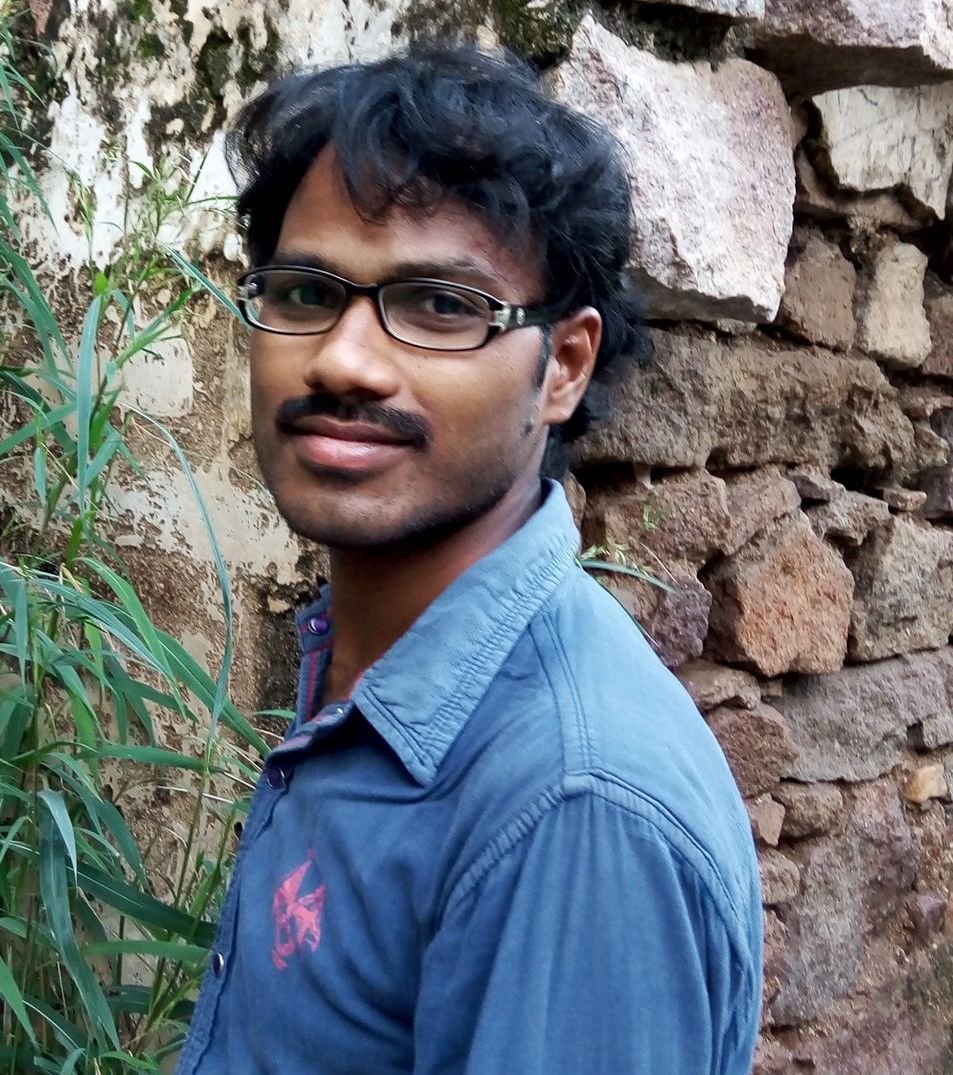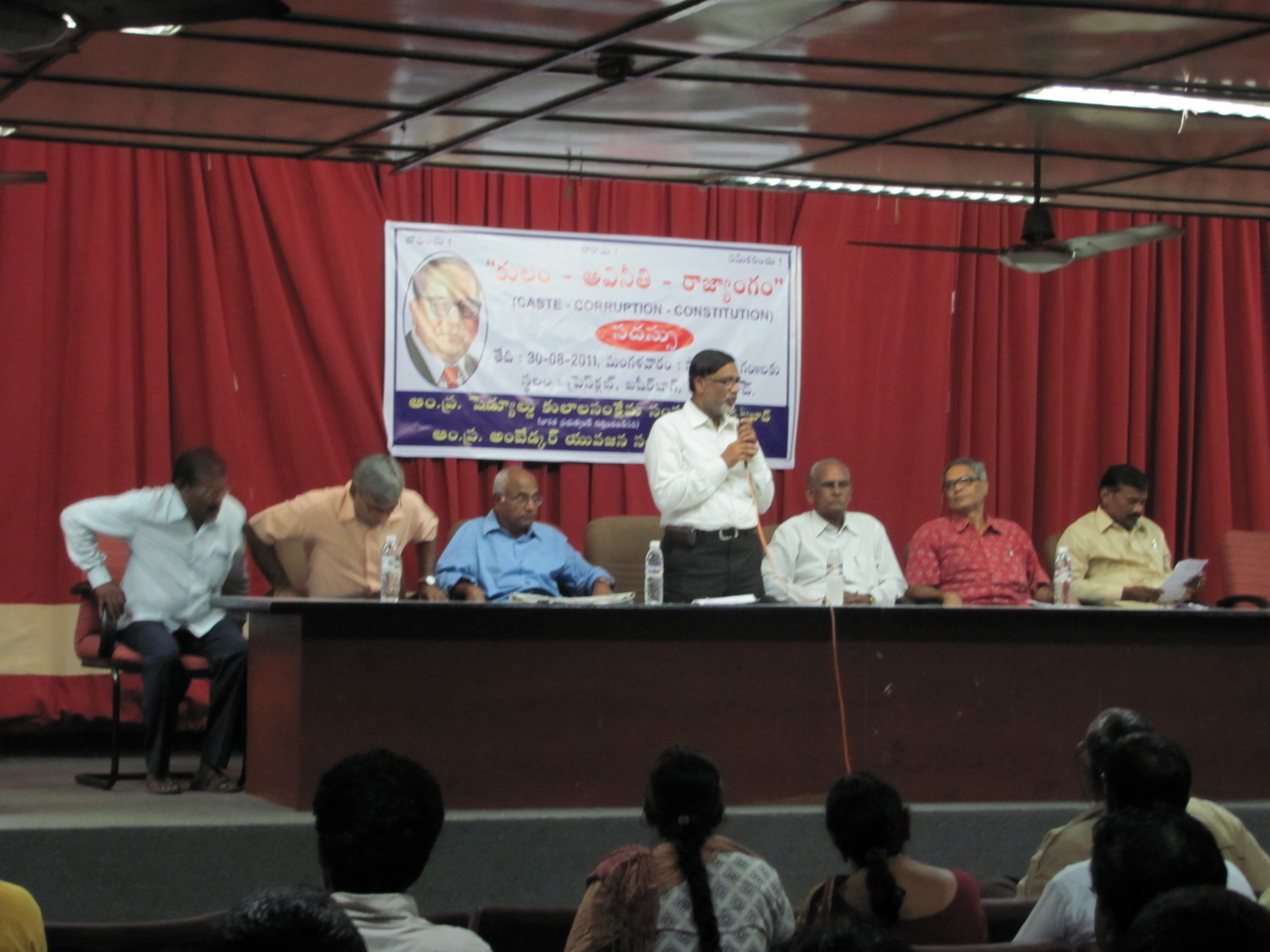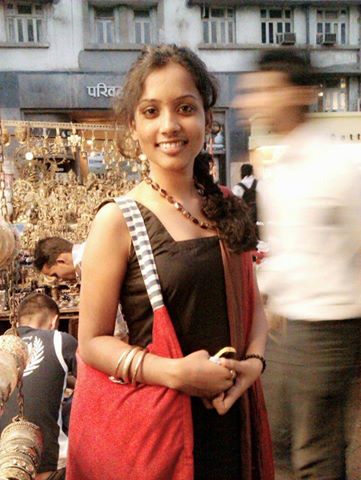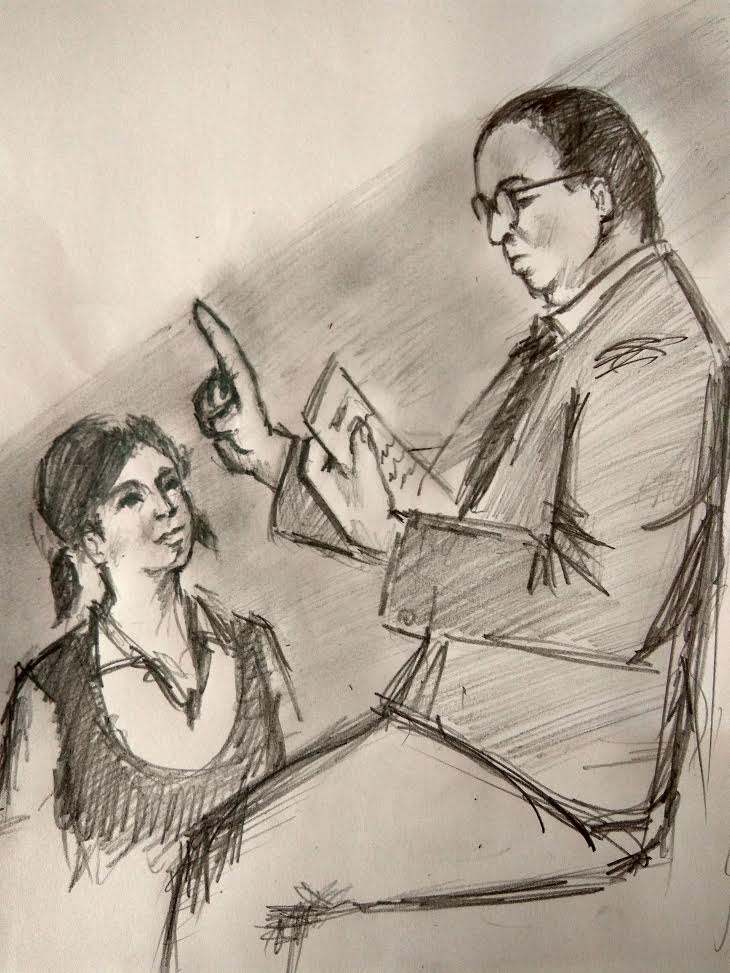Praveen Tulasi

This write up is in response to a facebook debate which popped up after Manikanta a BAPSA activist posted the below picture.
Image: Debate, Depiction and Disturbance
Excerpts from the Debate:
While Zeeshan Hussain commented that ‘good no. Dalits and Muslims are getting united slowly. lets keep the memory alive. lets keep recalling that our enemy is same’. For a moment let us understand what Zeeshan comments, he uses words like – good, unity of Dalit and Muslim, slowly, memory, and enemy is the same. What is wrong in the above formulation? Immediately, Majid Hassan commented that ‘Are we sure of the identity of those on top of dome? I fear the foot soldiers have something in common with this great leader’s followers. Gujrat 2002 witnessed the riot where a dalit face (Ashok Mochi) became a poster for it. One needs to get records about their identity if they were dalits, then before standing together there is a need of apology at least’. After this, the debate became personal between individuals and they deviated from the exact topic.

Depiction: The above image is depicted in three sections. The upper section of the image portrays the demolition of Babri Masjid by Hindu Kar Sevaks. The left hand side has Babasaheb Ambedkar whose Maha Parinivas Diwas is on December 6. The right hand side of the second section depicts that a candidate is raising the bar to destroy the Hindutva Fascism.
It is important to know that the people on the top are Karsevaks. The caste identity of the Kar Sevaks is engendered according to selection bias. Therefore, one finds SC’s and OBC’s more. Major chunk of the SC and OBC population is entrenched in labour work and other work forces. So, how do SCs and OBCs figure out more in communal rioting? Are they the ones to conspire? No. Almost all the communal riots in India are instigated by the Upper Caste Hindus. For e.g. Out of 74 Hindus convicted of killing Muslims in 2002, 53 are upper-caste Patidars. (Mehsana Sessions Court, The State of Gujarat vs. 76 accused).
While Hindutva has succeeded in appropriating the lower castes as its foot soldiers, the anti-caste and various social movements failed to recognize the constant Hinduization of the lower castes. Despite the collective failure, let us acknowledge that Constitution and the Anti-caste tradition have to face the hard reality of Hindutva Fascism.
Debate: The debate of the image should be around three pertinent questions:
1. Why was December 6 chosen as the day to demolish Babri Masjid?
2. Why there is an increasing Hinduization of the lower castes?[i]
3. What has the social or political movement done to bring a positive change in the lives of Muslims and lower castes?
Rather than emphasising on the above three questions, the debaters kept on beating around the bush. The answers to the above questions are more disturbing than anything else as they have changed the political imagination of the nation. Politics transitioned from agrarian economy to poverty to religion. Ever since the so called ‘Ram’ was inducted into people’s minds, religion is dominating the political spectrum, with no positive framework.
While the third element of the picture is not debated at all, the image of the Babri Masjid demolition is debated in relation to Babasaheb Ambedkar’s views on Muslim league and Muslims. Why the third element is not debated? Perhaps, one section of the debaters is not interested at all in crafting a method to destroy Hindutva.
There has to be a difference between the depiction and representation. The picture depicts Kar Sevaks demolishing Babri Masjid. They represent the Hindutva Fascism. The picture doesn’t depict Murali Manohar Joshi, Ashok Singhal, L. K. Advani or the ex-army men who trained Kar Sevaks how to destroy the centuries old Masjid. Why? The debaters didn’t talk of the pictorial representation.
Disturbance: The disturbing aspect is that the lower castes are used as foot soldiers in communal riots. Why does this happen? When the anti-caste movement is limited to urban spaces, the lower castes do not have any engagement with the anti-caste thinking. For their every day survival the lower caste depends on the feudal land lord, who in turn uses them in their project of Hindutva.
City based NGOs working for lower castes are not interested in going to the country side. Therefore, the question is, whether NGO’s want to annihilate caste or not? Certainly, people who had witnessed ‘Chalo Dilli- February 23, 2016’ know the answer to the above question. Certain NGO’s which came up post Durban are particularly interested in writing reports without concrete evidences. What is the use of writing such reports? Apart from receiving funds from foreign agencies and political parties, there is no fruitful result. The logical power of independent thinking is not given (or taught) to the lower castes. The NGO’s wants to keep ‘Politics in Command’. They are under the influence of political bosses. They can’t rise above politics. Therefore, NGOisation of social movements have been detrimental to the socially backward. The capacity to think beyond caste is not strengthened in the lives of lower castes. NGO’s which boasted of ‘social transformation’ at countryside haven’t produced transformation of any type. The NGO’s and small time agitations make people passive recipients. For the reception to strengthen, the agitations should convert to social movements. When the passive becomes active, there shall be an end to NGO’s and middlemen. The independent thinking shall overcome the disturbances.
At large, the local anti-caste thinkers are not dealt. When there is no indigenisation, anti-caste movement can’t go ahead. And the movement is limited to mere celebrations of birth and death anniversaries. Local people naturally connect to the local issues; it is only once in a while that the local talks of national. If there is an indigenisation of the movement, perhaps, there shall be a greater response.
In the name of movements, caste based leaders are generated. Keeping aside the goals of the movement, the leadership and its cadre master over exploiting people’s emotions.
Pictorial Representation: Pictures make you believe what one perceives things to be. Can picture be devoid of historical facts? No. A picture represents a historical fact. Let us revisit the historical facts in the wake of this picture. In 1980’s, having faced extreme caste discrimination, the Dalits in Meenakshipuram converted to Islam. After the conversion took place, the long time Pracharak of RSS Mr. Ashok Singhal, was deputed to Vishwa Hindu Parishad’s as Joint Secretary. Fearing that the lower castes shall convert to Buddhism or Islam, VHP and RSS have started rigorous Hinduization of the lower castes. Rather than going into the aspects of how the lower castes are Hinduized, the debaters are busy arguing that who is at the top of the dome? Yes, it is a pertinent question? Rather than being a custodian of social justice, why, the excluded being does reach the top of the dome? The answer, I leave it to the rationale of the reader.
What was at the helm of political affairs before the demolition? Mandal Commission was implemented in 1989. Dalits shouldered OBC’s in the implementation of Mandal Commission. There was an unbridled silent upsurge of the lower castes in Indian Politics. To erase the political imagination of the silent majority, Ram was inducted into their innocent minds.
Dalit: Sociological Analysis or Casteist Analysis
One is embedded in analyzing the term Dalit only to never actually understand it. Until the fourth generation of Indian Sociologists introduce Babasaheb Ambedkar to Indian Sociology, most of the Sociological analysis of caste is disheartening. If the Republic of Hindus is ‘Remembered in a Village’ and strategically passed to Urban sphere and modern social institutions, there ought to be institutional murder of Rohith Vemula.
Rather than analyzing the term Dalit, which you might find it problematic, it is better you understand the everydayness of the term. The everydayness is popularly called as ‘lived experience’ by Philosopher Gopal Guru. The everydayness can’t be analyzed in a Sociological Survey sheet. Only the experienced Dalit being can explain the everydayness of being a Dalit. (Philosophically, Heideggerian Self in nature).
The Manifesto of the Dalit Panthers categorically mentions that the term Dalit implicitly infer the oppressed. Many have agreements and disagreements with the word Dalit. The irony is that the dissidents of the Dalit term are unable to come up with a new term. Is English/Hindi/Sanskrit language vocabulary so bankrupt that it can’t find a new word to replace ‘Dalit’? Are the dissidents unable to find a suitable word that ‘shall’ replace the term Dalit? Or, is there no training of etymology?
According to Bahujan Nayak, Manyavar Kanshiram, those who think that they are Dalits and can be part of Hinduism, are called Chamchas. According to Philosopher Gopal Guru, they are called Paternal liberals. Dalits are never part of Hinduism or Hindutva. In the hierarchy of caste or Hindu religion, Dalit is outside the fold. Therefore, Dalits are a separate entity. Dalit is anti-Hinduism, anti-caste. Dalit is deprived of equality; as a result, she strives for equality. Dalit is the harbinger of equality. Hence, equality is to be learnt from Dalits or anti-caste movement.
Anti-Caste- thinking & Muslims
In volume No 17, When Ambedkar uses the word Muslim; he is referring to the political party Muslim league. To understand Ambedkar on the Muslim question one needs to read his book Pakistan or the Partition of India. Ambedkar uses the term ‘Student of Pakistan’ whose votary shall convey whether they wish to have Pakistan as a nation or not. Despite Periyar’s fully fledged support to Pakistan, Jinnah on the question of Dravidasthan commented that Dravidasthan is a distant dream.
The anti-caste thinker E.V. R. Periyar threatened to convert to Islam and had argued that Islam carries the political weight against Hindutva. Therefore, there are Islamic moments in anti-caste thinking from the Southern India. This was visualized in the Meenakshipuram Conversions.
‘References to Islam and Muslims in Ambedkar’s writings abound from early days. Bahishkrit Bharat, the paper he started in Marathi as the mouthpiece of the movement Bahishkrit Hitkarini Sabha had articles on Islam by one Maharashtrian reformer Lokhitawadi, and these were serialized over a number of issues. If Dr. Ambedkar had been against Islam or Muslims, he would not have spared so much of valuable space of his paper on them. Ambedkar was certainly impressed by the egalitarian principles of Islam and was pained to see it degenerate in India by absorbing evils of native Hinduism. He spoke out against this degeneration at a number of places, but eventually blamed Hinduism for it. Even at the practical level, he tends to praise it for its spirit of solidarity. He appears overwhelmed by the spirit of cohesiveness among Muslims and tendentiously prefers it for conversion. When he had declared in Yeole in 1935 that he would leave the Hindu fold and accept a new religion before his death, some of his disciples decided to change their religion and approached him. His advice to them was to accept Islam. His Bahishkrit Bharat (15 March 1929) also exhorts people to convert to Islam if they are willing to change their religion. It is only after the in depth studies of various religions vis-à-vis his goals that he decided on Buddha’s Dhamma. Thus, it is purely mischievous to say that he was against Muslims’. (Anand Teltumbde: 2004).
‘Dr. Ambedkar certainly had high regard for Islam for its egalitarianism and regretted that it lost it in India. He writes, ‘Although Islam is the one religion which can transcend race and colour and unite diverse people into a compact brotherhood, yet, Islam in India has not succeeded in uprooting caste among the Indian Musalmans’. ( Anand Teltumbde: 2004).
Borrowing from the discourse of the Islamic revolution in Iran, a Muslim contributor to Dalit Voice laments the fact that the leaderships of Muslim organisations in India have failed completely in their Islamic duty of championing the cause of the oppressed (‘mustadifin’) and crusading against oppression, the root cause of which he identifies as brahminism, whose victims he regards as not just the Muslims alone, but all Indians other than ‘upper’ caste Hindus [Dalit Voice 1991].
Writing for Dalit Voice, to dismantle Brahmanism, many Muslim writers have categorically mentioned that there is a greater need for a unity between the Muslims and Dalits. The message of Islam is to undertake a programme for radical social transformation and crusading against oppression. The spirit of Islam is to facilitate the marginalized/oppressed come out of oppression.
The entire writings and speeches of Ambedkar are against Brahmanism or Hindu Raj. When Ambedkar is against Brahmanism, there is a natural/essential support for egalitarian ideologies which includes Islam as well. Therefore, it would be act of over contemplation to believe that Ambedkar was against Muslims.
Jotiba Phule had educated Fatima Sheikh, who became the first Muslim woman teacher in India. Both Savitribhai and Fatima Sheikh have intersected their interests against Brahmanism and established the first school for girls in India. The image is actually an intersection against Hindu Raj.
Post Script:
‘In India the most oppressed, the most marginalised groups are the Dalits and the Muslims’ (Iqbal Ahmad). When the conditions of oppression are determined by Brahmanical social order, the oppressed should unite. The brahmanical hegemony is the common enemy for both the Muslims and Dalits. Therefore, the aim should be to dismantle the structures of Brahmanism.
If the discipline of commonsense can’t teach one the politics of interpretation, like the IV generation of Indian Sociologists, there shall be serious interventions by Political Philosophers who will ask, how can a ‘Brahmin be modern’ or how is it possible to be ‘Being Brahmin Being Modern’. Until one De-Castes, she cannot be modern.
The literature/dissertation on caste becomes scrap when it fails to understand the everydayness. The debates on facebook become useless when they fail to change the social and political consciousness.
Just like RSS, for their personal and intellectual benefits (ego), if one wishes to portray Ambedkar against Muslims, they are free to do so; however, they must admit that they are directly and indirectly helping RSS/BJP.
Notes:
[i] Vishwanathan, Rupa (2015) Silent Minority: Celebrated Difference, Caste Difference, and the Hinduization of Independent India, in Steven Vertovec, ed., Routledge International Handbook of Diversity Studies, Routledge: New York. (this chapter is available on academia.edu). Also, See, Anand Teltumbde (2005) Eds. Hindutva and Dalits—Perspectives for Understanding Communal Praxis. Samya: Kolkata. See, Kancha Ilaiah (2010) in his book ‘The Weapon Of the Other: Dalitbahujan Writings and the Remaking of Indian Nationalist Thought’ argued that the Hinduization had already acquired a social base among OBC’s. (page 94) Also, writers on Communal Violence have reported that lower caste participation in Communal riots, happen as a process of Hinduization.
Below is the link of the debate. https://www.facebook.com/bahujanjnu/posts/1125105807544677?comment_id=1125332307522027¬if_t=comment_mention¬if_id=1480710670485777
~~~
Praveen Tulasi is currently a provisional PhD candidate at the Centre for Political Studies, JNU and CC Member BAPSA.










